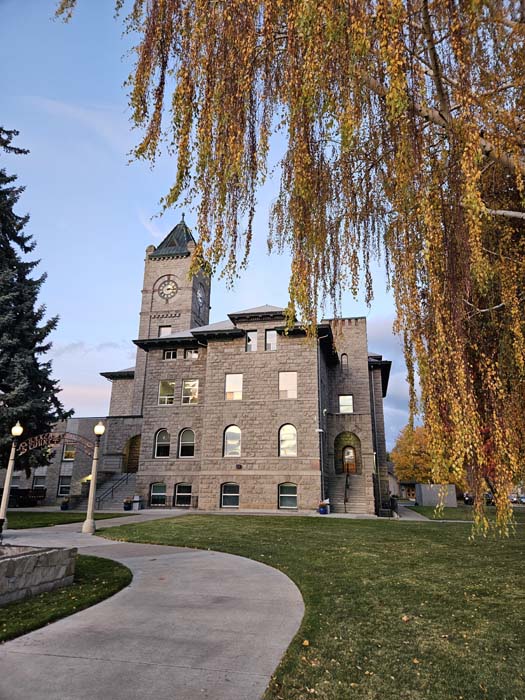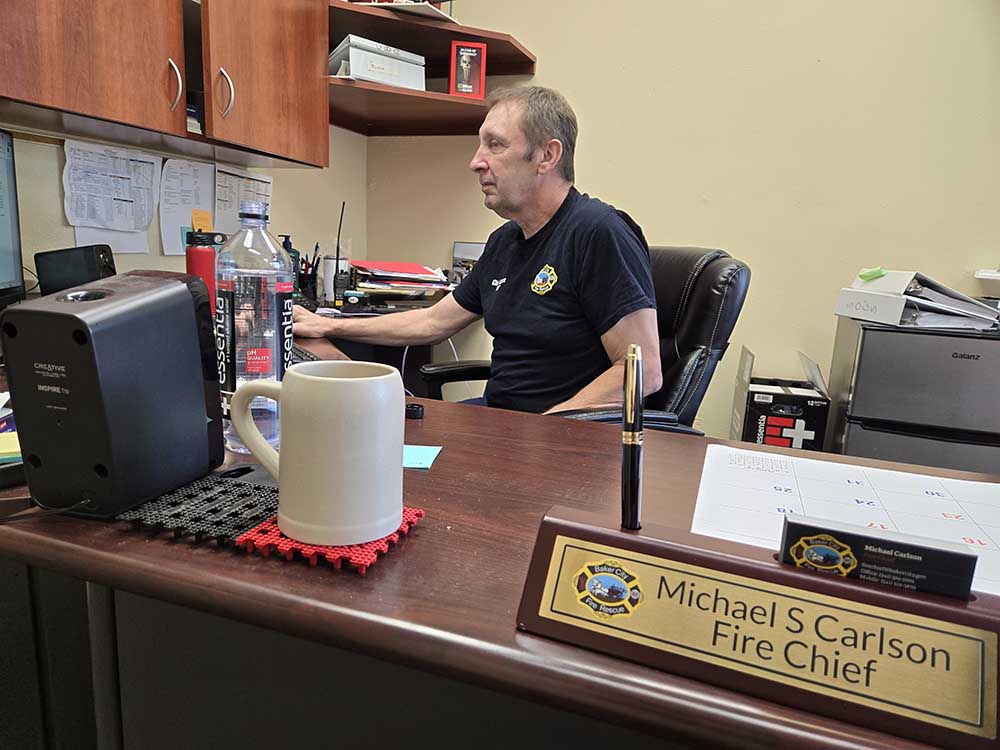ODOT says changes at Baker City intersection will make it easier for trucks to make turns
Published 10:21 am Thursday, May 8, 2025



One of Baker City’s major street intersections will look quite different after a multimillion-dollar revamping that will start soon and continue through Halloween.
The site in north Baker City is where Pocahontas Road and Hughes Lane meet 10th Street, near the city limits.
The problem is that neither Pocahontas nor Hughes Lane intersects with 10th Street at the 90-degree angle that traffic engineers prefer, said Lindsey McCullough, roadway and maintenance engineer for the Oregon Department of Transportation’s Region 5 office in La Grande.
The intersection’s angles are about 63 degrees, McCullough said.
ODOT’s current standards — adopted long after the intersection was built — allow a skew of up to 30 degrees, or a 60-degree angle, so the intersection is close to that threshold.
The skew in the intersection means drivers of longer vehicles, such as commercial trucks, have to make a wider swing to negotiate the right turn from 10th Street onto Pocahontas, or from 10th Street onto Hughes Lane, McCullough said. In some cases, she said, a vehicle has to cross into an adjacent lane to make the corner, increasing the risk for a collision.
Rebuilding the intersection so the streets meet at a 90-degree angle would be cost-prohibitive, requiring that Hughes and Pocahontas be realigned for a long distance to line up, McCullough said.
ODOT’s solution is to widen the intersection so vehicles have more room to turn.
A short section of Pocahontas Road will be closed for two days the week starting May 12 as a contractor prepares to start work.
Pocahontas Road will be closed just west of the intersection, said Vicki Moles, public affairs officer for the ODOT’s Region 5 office in La Grande.
A detour will be in place, Moles said.
She didn’t know which two days the closure will be in place.
There will still be access to Saint Alphonsus Medical Center-Baker City and businesses along Pocahontas Road, Moles said. Drivers won’t be able to drive east across the intersection from Pocahontas or turn north onto Highway 30, turn from 10th Street onto Pocahontas, or continue west from Hughes Lane across 10th Street.
After the Pocahontas closure, a short section of Hughes Lane just east of the intersection will be closed for up to two weeks, but that won’t happen until after Memorial Day, Moles said.
Neither of the closures will affect northbound and southbound traffic on 10th Street and Highway 30.
Here are the changes coming for each of the four approaches to the intersection:
Driving north (toward Haines) on 10th Street
The right turn lane, for drivers turning onto Hughes Lane, will be widened to make it easier for longer vehicles to turn without moving into the adjacent lane.
In addition, workers will build raised concrete “islands” to separate the right turn lane from the center lane, from which traffic can continue north on Highway 30. There is also a left turn lane onto Pocahontas, which will remain.
The islands will have curb cuts for pedestrians, McCullough said.
Driving south on 10th Street
The changes will be similar to that for northbound traffic, with a raised concrete island between the right turn lane onto Pocahontas, and the center lane.
Driving east on Pocahontas
The lane configuration will remain, with a right turn lane onto 10th Street and a center lane from which drivers can continue east onto Hughes Lane or turn left onto Highway 30.
There will not be a raised concrete island, however.
The north side of Pocahontas will be widened slightly to accommodate a bike lane, which will be painted but will not have a physical barrier, McCullough said.
There will also be a bicycle lane on the south side of Pocahontas, also painted but no physical barrier, between the center and right turn lanes.
Driving west on Hughes Lane
The lane configuration will change from the current two lanes to three, essentially mirroring the configuration on the Pocahontas side of the intersection, McCullough said.
Currently, westbound drivers on Hughes can turn right, go straight or turn left.
After the revamping, there will be a right turn lane onto Highway 30, and drivers in the center lane can continue straight onto Pocahontas or turn left onto 10th Street.
There will be bike lanes on both sides of Hughes Lane.
There will not be any concrete islands.
ODOT bought a right-of-way from the corner of a crop field, at the north side of Hughes Lane, to gain space for the right turn lane, McCullough said.
Workers will also build a gravel pad on the north side of Hughes Lane, next to the right turn lane, to house electronic equipment should ODOT decide in the future to build a traffic signal at the intersection, she said.
Traffic signal
Traffic volumes don’t meet the standard for a traffic signal now, based on the Manual of Uniform Traffic Control Devices, McCullough said.
Moles said traffic at the intersection would have to increase annually by 2.65% for 20 years — a 70% increase in total volume — to warrant a traffic signal. ODOT is projecting much slower growth, of about 1.6% on the north side of the intersection and 0.15% on the south side.
Even if traffic volumes reached the threshold, there’s no guarantee a signal would be installed, Moles said.
Engineers would consider other factors, including traffic volumes on the side streets — Pocahontas Road and Hughes Lane — that meet 10th Street at the intersection.
A signal would also cost $2 million to $3 million, Moles said.
Installing a traffic signal can have other effects, she said.
These include more collisions, particularly rear-end crashes, longer delays for traffic, and an increase in traffic on side streets as drivers avoid the signal.
McCullough said those are all effects that typically happen when a traffic signal is installed.
The number of crashes can also lead ODOT to install a traffic signal, Moles said.
The threshold would be three to five crashes in one year, she said. From 2019 to 2023, ODOT recorded nine “intersection-related” crashes at the site. There were none in 2022.
Eight of the nine crashes were “angle” crashes — when one vehicle hits the side of another. The other crash happened when a vehicle was turning, Moles said.
Most crashes involved vehicles traveling north or south on 10th Street, she said.
For the six-year period 2013-18, there were seven crashes, none in 2016 or 2017, Moles said.
During a safety study in June 2022, a remote camera recorded what ODOT described as 88 “near-miss” incidents at the intersection in 24 hours.
McCullough said she hasn’t reviewed detailed accident reports to determine how many of the crashes and near misses might have happened in part due to a vehicle making a wide turn.
Roundabout
Moles said ODOT officials considered building a roundabout at the intersection but rejected the option.
The cost would be prohibitive, and a roundabout would also require ODOT to buy much larger swathes of private property compared with the current project, she said.
Delays and detours
Moles said there will be occasional delays and detours during construction, but the timing and duration aren’t yet known.
The intersection work is part of a $12.1 million project that started last year when workers built hundreds of feet of new sidewalks, mainly on the west side of 10th Street, along with curb ramps to comply with the Americans with Disabilities Act.
ODOT’s contractor is Moreno & Nelson Construction of Walla Walla, Washington.









